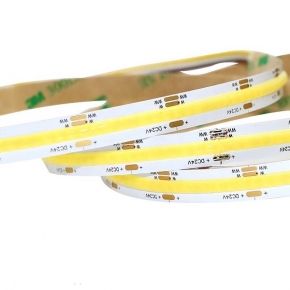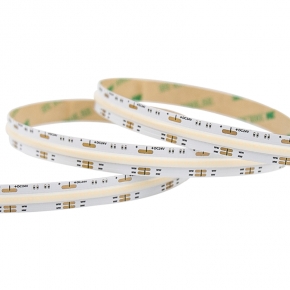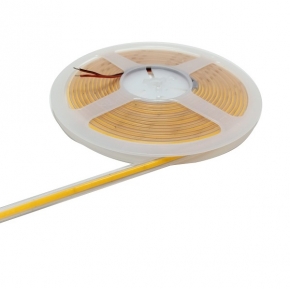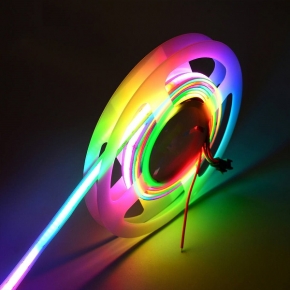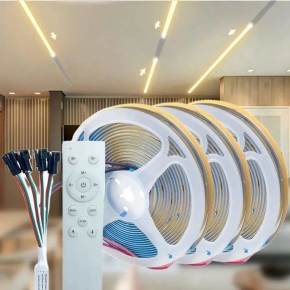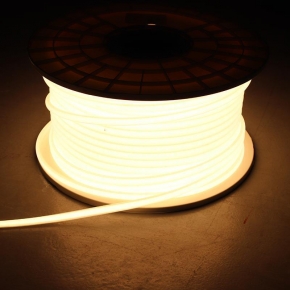Can LED Strip Lights Catch Fire?
Can LED Strip Lights Catch Fire?
LED strip lights have become an integral part of modern lighting solutions due to their versatility, energy efficiency, and aesthetic appeal. However, a common concern among users is whether these lights can catch fire under certain circumstances. This article aims to address this concern by exploring the safety of LED strip lights and providing tips on how to prevent any potential fire hazards.

The Safety of LED Strip Lights
Low Wattage and Heat Output
SMD LED strip lights are known for their low wattage per meter, typically ranging from 1W/m to 30W/m. This low energy consumption translates to minimal heat generation, making LED strip lights significantly cooler to the touch compared to traditional incandescent bulbs. In fact, the surface temperature of LED strip lights usually remains between 30-50℃, far below the ignition point of most combustible materials.
Materials and Construction
LED strip lights are constructed using high-quality materials such as LEDs, PCBs, and resistors. These components are designed to withstand normal operating temperatures without posing a fire risk. Moreover, the use of flame-retardant materials in the construction of LED strip lights further enhances their safety.
Comparison with Incandescent Bulbs
Heat Generation and Fire Risk
Incandescent bulbs, on the other hand, are notorious for their high heat output. With wattages typically exceeding 100W/bulb, incandescent bulbs can reach temperatures exceeding 200℃, making them a significant fire hazard. The high temperatures can easily ignite nearby combustible materials, leading to potential fires.
Efficiency and Longevity
LED strip lights outperform incandescent bulbs in terms of efficiency and longevity. LEDs convert a higher percentage of electrical energy into light, resulting in less wasted heat. This not only reduces the risk of fire but also extends the lifespan of the lighting system.
Potential Fire Hazards with LED Strip Lights
While LED strip lights are inherently safe, incorrect installation or the use of low-quality components can pose fire risks. Here are some potential hazards to avoid:
Low-Quality Products
Cheap, low-quality LED strip lights may use inferior materials and lack necessary safety features. These products are more prone to overheating and fire hazards. Always opt for reputable brands and quality products to ensure safety.
Improper Installation
Incorrect installation, such as overloading power supplies or using inappropriate wiring, can lead to overheating and potential fires. Ensure that you follow the manufacturer's installation instructions and use proper wiring and power supplies.
Poor Ventilation
LED strip lights installed in enclosed or poorly ventilated areas may overheat due to insufficient heat dissipation. Always ensure adequate ventilation around the lights to prevent overheating.
Tips for Safe Use of LED Strip Lights
Use Quality Products
Invest in high-quality LED strip lights from reputable brands. Quality products undergo rigorous testing and adhere to safety standards.
Follow Installation Guidelines
Carefully read and follow the manufacturer's installation instructions. Use the recommended power supplies and wiring to ensure safe operation.
Maintain Adequate Ventilation
Ensure that LED strip lights are installed in well-ventilated areas to allow for proper heat dissipation.
Regular Inspection
Periodically inspect LED strip lights for signs of damage or wear. Replace any faulty or damaged components promptly to prevent potential hazards.
Conclusion and Order Information
LED strip lights are a safe and efficient lighting solution when used correctly. By understanding their operating characteristics and following safety guidelines, you can minimize any potential fire hazards.
If you are looking for high-quality LED strip lights and accessories, LEDWay Lighting is your trusted partner. We offer a wide range of LED strip lights, power supplies, and connectors to meet your lighting needs. To place an order or inquire about our products, please contact us at sales2@ledwaylighting.com. Let us help you illuminate your space safely and efficiently.

